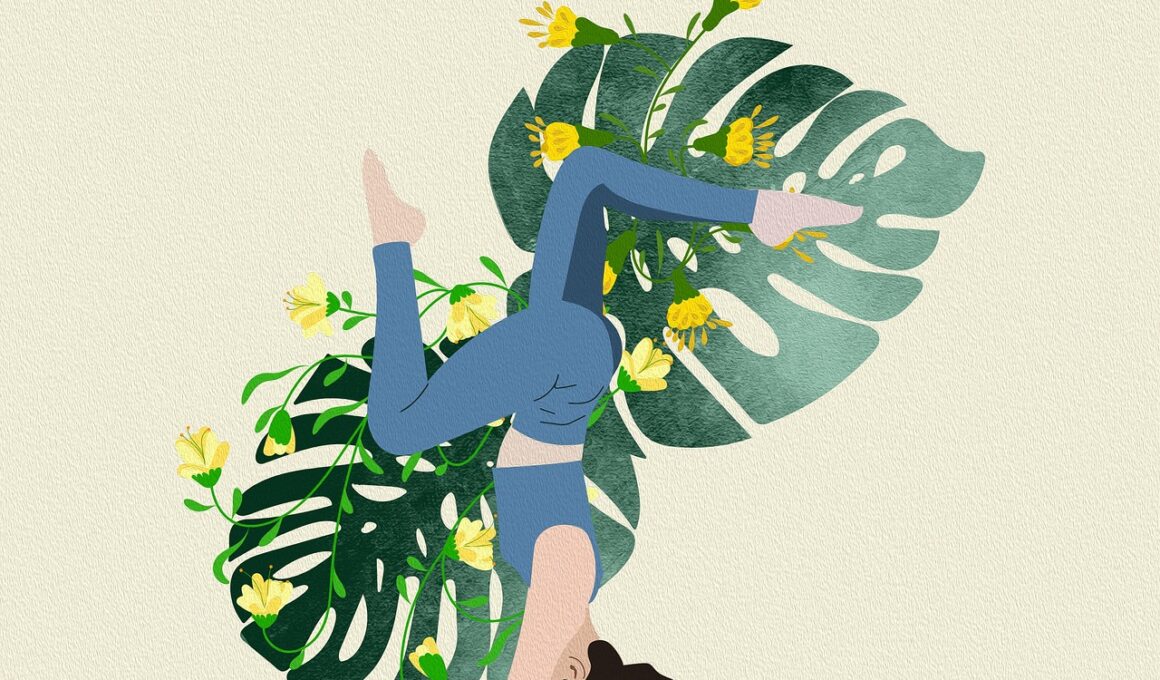Slow Movements and Meditation: A Strengthening Home Workout Method
Incorporating slow movements alongside meditation is a powerful strategy for enhancing your home workout routines. This method focuses on being present in every motion, allowing not just for physical strength but also mental clarity to blossom and grow. Slow exercises emphasize controlled, intentional movements, which can significantly reduce the risk of injury compared to more intense workout styles. They invite you to connect your breath with every action, which fosters a deeper awareness of how your body feels during each phase of the exercise. Combining these slow movements with meditation techniques can stimulate mindfulness, ensuring you stay connected throughout the process. Furthermore, the practice encourages relaxation while building strength, enabling you to perform better in other workouts. Dynamic movements infused with a meditative essence will transform how your body functions and feels. This workout method can significantly broaden your fitness horizons, offering a holistic approach encompassing both physical fitness and mental well-being. By integrating these techniques, you can start to cultivate a home workout environment that fosters both resilience and tranquility, ultimately leading to substantial improvements in your overall health.
One of the key components of slow involvement is the process of understanding the interconnectedness of body and mind. When you commit to slow movements, you’re not just exercising your muscles; you are also training your mind to focus. This establishes a harmonious relationship between your body and mental state, which is often overlooked in traditional workouts. As you progress through various stretches or gentle flows, consider the rhythm of your breathing and the sensations throughout your body. This connection becomes even more pronounced when integrating mindfulness techniques into your workout. For example, utilizing meditative approaches such as deep breathing or visualization can enhance your experience, allowing each movement to serve as a tool for mental clarity. Incorporating pretty objects or imagery can inspire and stimulate you while you work out at home. Meditation, when combined with slow workouts, serves as a bridge to attract performers into a deeper awareness of their progress and physical capabilities. By fostering this awareness, you’ll witness improved performance and a refreshed mindset that transcends workout habits. The outcome is a synergistic practice that nourishes both body and spirit.
The Benefits of Combining Slow Movements and Meditation
The benefits of combining slow movements and meditation in home workouts are numerous and profound. This fusion primarily enhances flexibility and range of motion, which are essential to other fitness endeavors. With over time, performing stretches and slow movements prepares the body muscle fibers for increased strength and resistance. Additionally, these practices promote better posture and body alignment, reducing the likelihood of strain and stressing the joints over time. Mentally, this combination fosters greater focus and concentration, leading to improved mental health and emotional stability. Engaging in slow movements allows practitioners to approach their limits gradually, making modifications while ensuring safety. Enhancing mindfulness during the workout builds resilience against distractions, making your workout experience more enriching. Practicing meditation techniques in tandem allows your mind to unwind and release accumulated stress. As a result, the overall workout transformation offers holistic benefits that extend beyond physical well-being. Moreover, regular practice can lead to greater self-awareness, enabling a deeper understanding of individual fitness journeys. This interconnected approach becomes a sustainable practice, allowing for a lifelong commitment to improved health practices.
Implementing slow movements integrated with mindfulness can be done efficiently by creating a home workout routine that supports your goals. Start by setting aside a designated space in your home that inspires calmness, allowing you to connect with your workout without distractions. Consider dimming the lights, playing serene music, or using aromatherapy to evoke a peaceful atmosphere. Choose exercises like tai chi, yoga, or slow dance to integrate into your workouts. These exercises promote slow and deliberate movements while offering significant physical health benefits. Alongside these movements, schedule time for meditation before or after your workout sessions. A simple breathing exercise or guided meditation can anchor your intentions and foster a positive mindset. Utilizing mindfulness apps can also enhance the experience, offering guided recordings focused on slow movements and meditation. Keeping a progress journal to reflect on the sensations and emotions felt during these sessions can greatly enhance your journey. By continuously adapting and refining your practice, your home workout will become an ever-evolving expression of both physical strength and mental clarity.
Creating Your Slow Movement and Meditation Routine
Designing a slow movement and meditation routine will require consistency and commitment. Begin with a warm-up phase that incorporates soft, fluid movements to prepare the body for deeper stretches. Gradually ascend into your chosen slow exercise or yoga sequences, focusing on form, balance, and breath at each flow. Take note of the sensations in your body, adjusting positions according to your level of comfort and flexibility. After a series of slow movements, dedicate time to settle into a meditation or mindfulness practice. Explore options such as guided meditation, visualization, or simply being in stillness. Aim to meditate for 10 to 20 minutes, giving yourself time to fully engage with your thoughts and feelings. Ending your practice with gentle movements or stretches can anchor the insights gained through meditation. Try integrating a soothing led-commentary that will encourage relaxation and mindfulness. By maintaining this intentional structure, you will create a comprehensive “slow to fast” experience that gradually strengthens both your physical and mental fortitude and greatly improves workout outcomes.
To amplify the benefits of your slow movement and mindfulness routine, consider involving community elements, whether physically or virtually. Engaging with like-minded individuals can provide support, encouragement, and motivation as you embark on this journey. You could join a local meditation group or participate in slow movement classes offered in your area. Alternatively, access online platforms that focus on community-based slow movement and mindfulness practices, providing opportunities to share experiences. Aim to participate in weekly challenges that incorporate slow movements into daily life. Additionally, seeking out online workshops or classes can offer insights from experienced practitioners. A community can foster genuine connections, enhancing the environment around your practice. Always remember to challenge yourself while remaining patient with your progress, allowing an authentic space for exploration. Progress evaluations through journaling or video might uncover areas of growth, helping to visualize your journey. By fostering supportive relationships, you enrich your slow movement and meditation routine while simultaneously contributing to a collective journey of personal health and wellness.
Long-Term Commitment and Mindful Practices
As you integrate slow movements and mindfulness into your home workout, cultivating a long-term commitment will prove vital for success. Consistency plays a critical role in achieving substantial progress and reinforcing positive habits. Establishing a weekly schedule that allocates specific times for slow movements and meditation will help build this routine into your daily life. Recognize the ebb and flow of life; some weeks may feel more challenging than others, and that’s okay. Allow yourself the flexibility to ease into your self-care and exercise regimen. This nurturing approach prevents burnout and keeps the process enjoyable. Additionally, explore innovative ways to refresh your slow movement routine, perhaps through varying exercises or mediative practices that sustain your engagement. Remember to embrace each experience with self-compassion, recognizing that every small step contributes to your growth. Overall, consciously committing to your slow movement and meditation sessions cultivates a healthy balance between physical and mental mindset, ultimately leading to lifelong sustainable benefits. You’ll discover a renewed sense of vitality as you implement these transformative practices, positively impacting your overall well-being.
In conclusion, blending slow movements with mindfulness techniques enhances your home workout experiences profoundly. By focusing on strength training in a calm and centered manner, both your body and mind benefit synergistically. This integrated approach promotes greater awareness while conducting daily activities, improving how you perceive your physical capabilities and mental clarity. Over time, daily practice will significantly improve fitness, emotional stability, and overall well-being. Consequently, you will not only develop a deeper connection with your body but also understand and control your mental states more effectively. Cultivating patience and resilience through slow movements and meditation inspires a lasting commitment to personal growth. Bridging the gap between body and mind through these practices creates a pathway to holistic health, renewed energy, and vibrant living. Moreover, a commitment to this unique workout method allows you to redefine your relationship with fitness and health altogether. As you persist in your journey of strength and mindfulness, you empower yourself to rise above challenges, leading to a more fulfilled and joyous life. So, make space for this harmonious routine in your life, and witness the transformation unfold.


